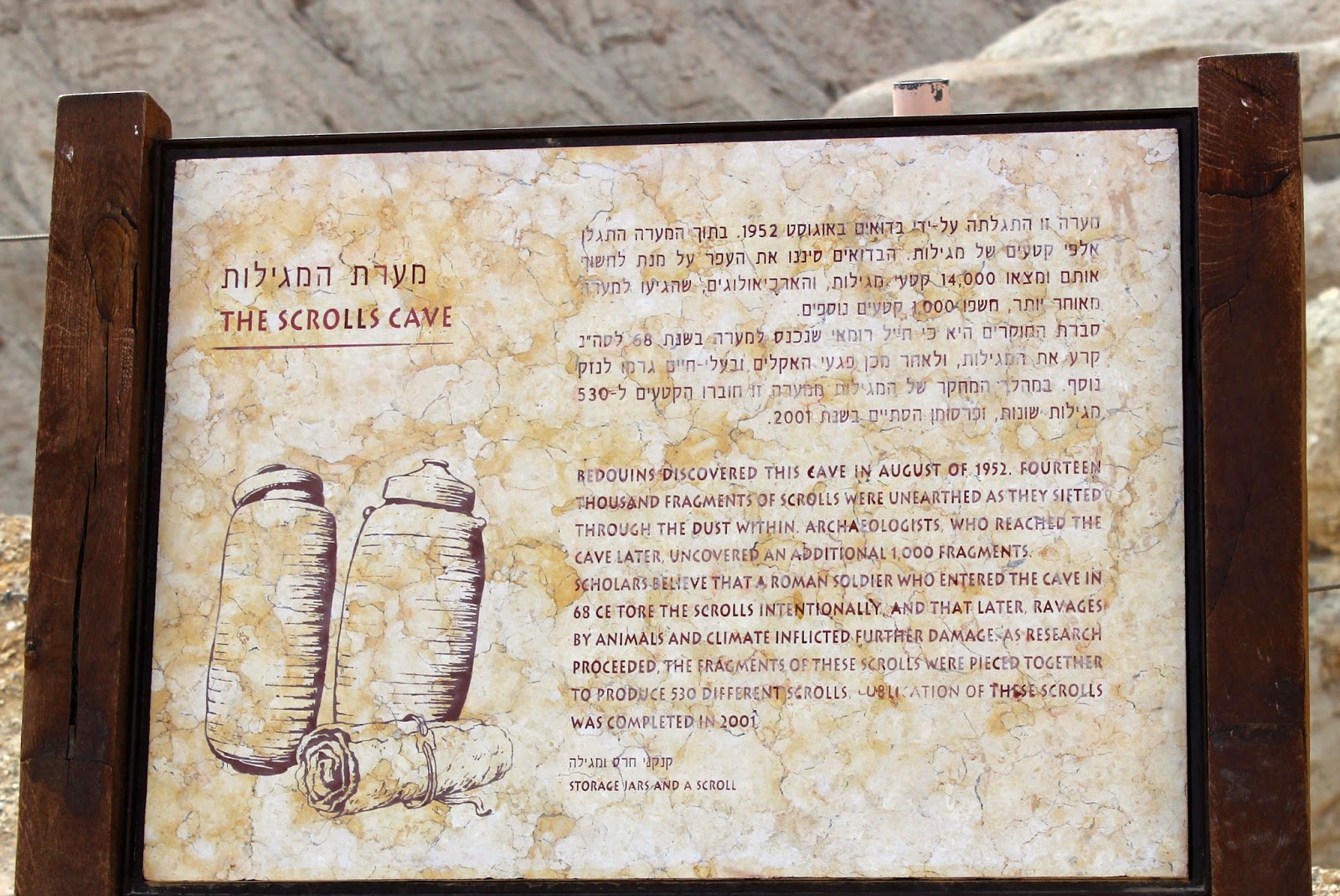In the Old Testament times a small settlement
existed here as City of Salt.
This frontier post for the tribe of Judah
was later renamed Khirbet Qumran.
Qumran is 9 miles south of Jericho
and 13 miles east of Jerusalem
and 20 miles NE of En Gedi.
The Essenses, an extreme sect of the Pharisees,
is thought to have moved here in the 2nd century BC.
is thought to have moved here in the 2nd century BC.
They did not approve of many
of the religious practices in Jerusalem
and moved here to lead a communal lifestyle
and practice an ascetic life
as they waited for the Messiah.
of the religious practices in Jerusalem
and moved here to lead a communal lifestyle
and practice an ascetic life
as they waited for the Messiah.
They never married and practiced ritual baptisms
and lived in the caves that dot the cliffs.
( Current digs have shown
a different story about the monastic lifestyle.)
( Current digs have shown
a different story about the monastic lifestyle.)
The community was abandoned in 30 BC
following an earthquake. It was resettled in 4 BC
until it was destroyed by the Romans in 68 AD.
Excavations here show the ritual baths,
the rooms where the ascribes copied the scrolls,
the dining hall, a storeroom,
and other public buildings.
the rooms where the ascribes copied the scrolls,
the dining hall, a storeroom,
and other public buildings.
Cave number 4
In 1947, a young Bedouin boy
was chasing his goats
and discovered seven parchments in a cave.
They had been stored in clay jars.
was chasing his goats
and discovered seven parchments in a cave.
They had been stored in clay jars.
The "Dead Sea Scrolls" as they became known by-
had been preserved for over 2000 years.
Fragments of all the Old Testament books
except Esther were found here.
The manuscripts fall into 3 major categories:
Biblical, apocryphal and sectarian.
The Biblical manuscripts comprise some 200
copies of books of the Hebrew Bible,
representing the earliest copy of Biblical text found.
had been preserved for over 2000 years.
Fragments of all the Old Testament books
except Esther were found here.
The manuscripts fall into 3 major categories:
Biblical, apocryphal and sectarian.
The Biblical manuscripts comprise some 200
copies of books of the Hebrew Bible,
representing the earliest copy of Biblical text found.
These scrolls have a storied past once they were found.
They were moved through dealers of antiquities,
smuggled to the United States,
and finally an archeologist returned them to Israel.
They were moved through dealers of antiquities,
smuggled to the United States,
and finally an archeologist returned them to Israel.
They are now carefully preserved
in the Shrine of the Book
in Jerusalem which opened in 1965.
in the Shrine of the Book
in Jerusalem which opened in 1965.
They are displayed under strict atmospheric conditions
to minimize aging and damage.
Shrine of the Book
A visit to this site certainly brings praise to God
for a community
that had such reverance for God's Holy Word.
to minimize aging and damage.
Shrine of the Book
A visit to this site certainly brings praise to God
for a community
that had such reverance for God's Holy Word.










No comments:
Post a Comment
Thanks for adding your thoughts and comments- they are greatly appreciated.